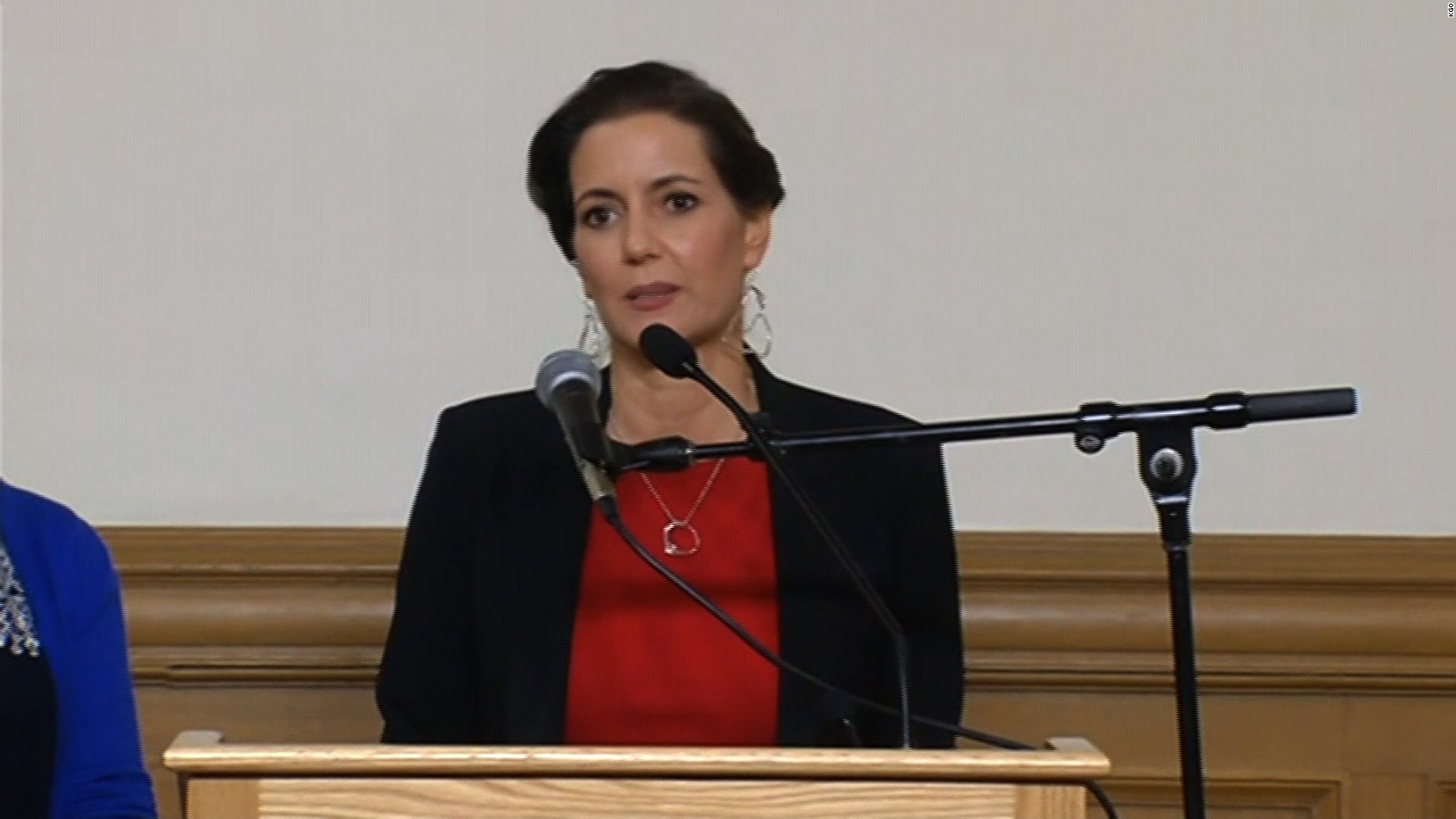The Great Rescue in Timbuktu
Abdel
Kader Haidara in Timbuktu with ancient manuscripts from Mali, Niger,
Ethiopia, Sudan, and Nigeria, September 2009. Haider was instrumental in
saving the manuscripts during the militant Islamist takeover of
Timbuktu in 2012.
The Bad-Ass Librarians of Timbuktu: And Their Race to Save the World’s Most Precious Manuscripts
by Joshua Hammer
Simon and Schuster, 278 pp., $26.00
1.
On March 1, the International Criminal Court at The Hague formally charged Ahmad al-Faqi al-Mahdi, one of the leaders of the 2012 Islamist takeover of the Malian city of Timbuktu, with destroying the city’s cultural heritage—the first such international indictment. During June and July of that year, al-Mahdi took part in attacks on the mausoleums of Timbuktu’s Muslim saints, shrines that were deemed heretical under the strict Salafist religious code the occupiers tried to impose on the city. Using pickaxes, al-Mahdi and his group demolished the mud-brick buildings that had stood for five or six centuries and were central to Timbuktu’s rich cultural history.Among the targets of al-Mahdi and his fellow jihadists was the fifteenth-century Sidi Yahya Mosque; the jihadists smashed a sacred door that, according to long-held beliefs, would remain closed until the world’s last day.
The court’s decision to prosecute an act that victimized buildings, not people, says much about the West’s evolving response to radical Islamic jihad, and about the special significance of Timbuktu for the preservation of Islamic architecture and writings. In places like Afghanistan’s Bamiyan cliffs and the Syrian city of Palmyra, jihadists have tried to purge the historical record of what they regard as idolatrous or impure; both sites were mentioned by prosecutors at al-Mahdi’s hearing. Not mentioned there was another vicious act of destruction, aimed at the core of Timbuktu’s unique identity.
As jihadis retreated from the city, fleeing a French intervention that began in the first weeks of 2013, they set fire to thousands of centuries-old books in the Ahmed Baba Institute of Higher Learning and Islamic Research. It was not the contents of the books the jihadis resented—many were in fact Korans, or Koranic exegeses—but apparently, as Joshua Hammer writes in his new book The Bad-Ass Librarians of Timbuktu, the historical tradition from which they sprang: a golden age of literacy, learning, and intellectual debate at the heart of Islamic West Africa.
Timbuktu
was founded in the twelfth century by traders traveling along
trans-Saharan routes and the great Niger River; its population was a
blend of Arabs, Foulani, Songhay, and Tuaregs, and the city soon became a
remarkably cosmopolitan and tolerant place. Income from tariffs, and
from nearby salt and gold deposits, made it rich as well. Just as in
Florence at the same time, merchants in thirteenth- and
fourteenth-century Timbuktu began spending their wealth on
manuscripts—not the bound codices of Europe and Byzantium, but loosely
gathered folios, their initial letters often beautifully illuminated,
held together in leather folders or tied with string. Handwritten texts
on both sacred and secular topics, mostly in Arabic but a few in Greek
or Hebrew, flowed into Timbuktu from Egypt, North Africa, and Spain,
soon followed by blank Italian paper for the use of native writers and
copyists.
Learned debates on astronomy, law, and theology, and precious
chronicles of otherwise unrecorded local history, were among the
important texts. Private libraries flourished. In the late sixteenth
century the great scholar and writer Ahmed Baba claimed that his
collection of 1,600 volumes was small for its time.
This efflorescence of study and the written word lasted for over two centuries, as two successive West African states, the Mali and Songhay empires—both of which granted to Timbuktu a remarkable degree of autonomy—were able to maintain stability in the region. But internal divisions weakened the Songhay dynasty, and in 1591 a mercenary army sent from Morocco crossed the desert and conquered the city. Timbuktu came under harsh rule and the age of book production came to an end.
Ahmed Baba, in the middle of his long career as a writer, was imprisoned for suspected disloyalty by the Moroccan rulers of West Africa; his library was plundered and dispersed.
But other manuscripts remained, preserved from decay by the dry Saharan climate and stashed away by families who, in many cases, no longer read or understood them. They remained in tin trunks and camel-skin satchels as Timbuktu declined into a place whose name came to stand for distance and inaccessibility. During the late nineteenth and early twentieth centuries French colonial authorities took over local property. This made manuscript owners more wary and drove the texts deeper underground—in some cases quite literally, since burying them beneath the desert sand proved an effective way to protect them from termites.
Few
outsiders knew about the Timbuktu manuscripts when Mali became
independent in 1960. But after a UNESCO delegation visited Timbuktu in
1964, the organization took steps to gather and preserve the scattered
volumes. A manuscript library was established, named for the great
bibliophile Ahmed Baba. It was this institution, along with many of the
saints’ shrines in the city, that the jihadists who took over northern
Mali tried to destroy in 2012 and early 2013 under the leadership of
Salafist zealots, among them Ahmad al-Faqi al-Mahdi.
2.
By then Joshua Hammer, a Berlin-based journalist who has written about Mali in these pages as well as for Smithsonian and National Geographic, had become intensely interested in the manuscripts. On an initial visit to Timbuktu in 2006, Hammer reported on efforts to collect and preserve them and met Abdel Kader Haidara, a leading staff member of the Ahmed Baba library. Six years later, the unassuming Haidara, responding to the pressures of the jihadist takeover of northern Mali, would turn out to be one of the heroic “bad-ass” librarians of Hammer’s title.Haidara’s father, master of one of Timbuktu’s many small, in-home schools, had collected manuscripts since well before the Ahmed Baba Institute was founded. He was continuing a family tradition that went back many generations. After the elder Haidara’s death in 1981, the executor of his will told a surprised seventeen-year-old Abdel Kader that he had inherited his father’s library, at that time stored in a set of footlockers inside a closet. Abdel Kader had intended to become a livestock trader, not a preserver of books, but he slowly accepted a responsibility for which he had felt no special calling.
The director of the Ahmed Baba Institute, sensing that bibliophilia ran in the Haidara line, persuaded Abdel Kader to join his staff as a manuscript hunter. The institute’s collection began to swell, as did its reputation abroad. New funding, mostly from Middle Eastern governments hoping to preserve Islamic history, allowed Abdel Kader to be generous when buying books from the wary villagers. In one transaction with a Tuareg nomad, Haidara bought a trunkful of volumes for twenty times what the man had first asked for. By the next morning, Tuaregs from all over the region had dug manuscripts out of their hiding places and brought them, stuffed into skin sacks, to Haidara’s door.
A chance visit by a television crew filming Wonders of the African World, a PBS -sponsored travelogue, brought Henry Louis Gates Jr. to the Ahmed Baba Institute, and suddenly new doors began opening for Haidara in America and Europe. Grants from the Ford and Andrew Mellon foundations funded new buildings where the manuscripts could be studied and preserved. Visitors began arriving, often having learned that a highly literate, scholarly culture had flourished for centuries in sub-Saharan Africa; many had assumed that writing had only arrived with European colonization. “These are books written by black people?” Gates had asked Haidara during his visit. He was assured that some indeed were. The exchange was later broadcast in the first episode of Wonders of the African World, and as the camera panned over shelf upon shelf of dusty folios, Gates commented: “The mind of the black world, locked into the pages of these priceless books…. Evidence of a great civilization, untranslated and unknown.”
The very effort to gather and preserve the manuscripts only made them a more visible target when, early in 2012, a military force led by radical Islamists arrived in Timbuktu. Hammer traces the origins of that uprising and describes three of its leaders: Mokhtar Belmokhtar and Abdel-hamid Abou Zeid, both Arabs, veterans of al-Qaeda in the Islamic Mahgreb ( AQIM ); and a Malian Tuareg named Iyad Ag Ghali, formerly the leader of a Tuareg separatist movement. An alliance between the Tuaregs and AQIM had created a powerful rebel army dominated by the three leaders. Rich with funds paid by European governments as ransom for victims of kidnapping, and having obtained weapons from Libyan arsenals after the fall of Muammar Qaddafi, they were emboldened to launch a jihad against Mali’s democratically elected government. They hoped to found an ISIS -like state and attract militants from West and North Africa.
This was not the first time that Timbuktu had faced a jihad. In the first decade of the nineteenth century in what is now Nigeria, the jihadist Usman dan Fodio established the Sokoto Caliphate, a powerful empire connecting thirty different emirates across much of West Africa. Timbuktu was not part of this empire; but inspired by the success and growth of the caliphate, the preacher Seku Amadu tried to establish his own jihadist empire and in 1825 conquered Timbuktu. During his reign European explorers were banned from the city. But the city’s milder, more tolerant strain of Islam, with its reverence for shrines and its love of annual festivals, prevailed. According to Hammer, when invading jihadis proclaimed their campaign of religious reformation in 2012, the imam of the Sidi Yahya Mosque said, “How dare you say you’re going to ‘teach us Islam’? We were born with Islam. We have had Islam in this city for one thousand years.” The jihad leader Iyad Ag Ghali responded by saying, “We’re going to have to replace the imams in this town.”
Ghali
interests Hammer as a case study in the often mysterious origins, both
personal and global, of jihadism. His Sufi background, his fondness for
music and Western-style dance clubs, and his purely secular devotion to
the cause of Tuareg rights seemed to make him an unlikely convert to the
Islamist cause. But missionaries from Pakistan convinced him to join
Tablighi Ja’amat, a fundamentalist movement advocating strict adherence
to their interpretation of the Prophet Muhammad’s tenets. Ghali
abandoned music and began practicing a harsh asceticism. In late 2007 he
took a post at the Malian consul in Saudi Arabia in order to be near
the Great Mosque. There, he adopted the views of al-Qaeda. Both Manny
Ansar, a close friend in Mali with whom Ghali had once shared a passion
for music, and the American ambassador Vicki Huddleston futilely tried
to persuade Ghali not to become an ascetic radical jihadist. Hammer, for
his part, feels unable to explain Ghali’s decision.
Before
his transformation into a holy warrior, Ghali had helped organize a
concert series in the Malian desert, and that event led to the yearly
musical festival outside Timbuktu at a village called Essakane. Hammer
devotes one of his best chapters to the events of 2012, when that year’s
festival closely coincided with the launching of the rebel campaign
that would, within a few months, threaten Malian territory as far south
as the capital, Bamako. During the preceding decade Essakane, where
artists like Robert Plant and Jimmy Buffett jammed with native Tuareg
bands, had inspired talk of a Woodstock in the desert. “Swords turn to
guitars,” wrote the MTV founder Tom Freston in Vanity Fair after
attending the 2007 festival. But radicalized Tuaregs and many Islamists
had come to regard Essakane as a “Sodom and Gomorrah” of alcohol, drugs,
and illicit sex. By 2012, when Bono performed there—arriving, as Hammer
writes, in a well-appointed private jet, “a cocoon of privilege,
wealth, and celebrity”—the perimeter of the festival had to be protected
by armored vehicles and elite troops.
Was the Malian government’s support of this and other music festivals, and of Western tourism, a cause of the attempted Islamist takeover? Hammer stops short of saying so, but his juxtaposition of Essakane’s success with the launch of the rebellion suggests that it may have had a part. After a joint performance with the Tuareg band Tinariwen, Bono climbed back into his luxury jet, proclaiming that “music is stronger than war.” But Iyad Ag Ghali and his new Arab allies were at that moment preparing an assault on a remote army camp to the north. Ghali’s forces captured and executed ninety government soldiers and started an aggressive advance toward Bamako. Mali’s president, Amadou Touré, was ousted in a military coup in March and the country descended into chaos. Unwilling to undermine Timbuktu’s relatively new status, he had insisted that the show go on at Essakane, even assigning to it the presidential guard troops that later turned against him.
When
the militants arrive in Timbuktu, proclaiming it the capital of
Azawad—an independent Tuareg state—the story of Abdel Kader Haidara and
his manuscripts merges with that of the jihadist triumvirate. Haidara
and his fellow librarians witnessed the imposition of harsh versions of
sharia law, including stonings, amputations of hands, and a ban on
broadcasting music. A large collection of cassette tapes of traditional
songs recorded in neighboring villages was destroyed. Haidara worried
that his books would suffer a similar fate, yet the jihadists seemed
strangely indifferent to them. Even though some of the jihadists were
assigned quarters in the Ahmed Baba Institute itself, they seem not to
have recognized the special meaning the books held, both for Timbuktu
and for the Western nations that had pledged funds to preserve them.
Though no immediate threat was apparent, the Timbuktu librarians decided, presciently as things turned out, that the entire collection must be moved. Hammer describes how almost all of the books were carefully packed into specially made tin storage lockers, then brought south by truck and canoe, past brigades, bandits, and the military checkpoints of both jihadist and Malian government forces. Thanks to Haidara’s orchestration by cell phone of the complex operation, and the funds that allowed him to buy off those who stood in their way, not a single manuscript was lost en route to Bamako, a city then thought to be safe from the jihadist threat.
As this rescue effort was taking place, the French began the military attack known as Operation Serval, sweeping up from the south in an effort to drive the militants away from Bamako and, ultimately, into the desert north of Timbuktu. Hammer’s account of this operation is tense and urgent. He convincingly shows what was at stake in Operation Serval, and how great a risk was taken by France, both militarily and politically, to support the elected government of its former African colony. The lessons of that intervention have not been lost on policymakers now struggling with the rise of ISIS in Libya, not far from Mali’s northern borders, and with its power over parts of Iraq and Syria.
Hammer’s
tale ends on a note of very qualified triumph. Timbuktu freed itself
from Islamist domination in January 2013 and music was again heard on
local radio stations, but life did not return to normal. Northern Mali
had been freed from a brutal, punishing regime, but kidnappings and
suicide bombings continue there today.
The Essakane festival has been
canceled for the year. Iyad Ag Ghali and a group of his fighters have
retreated to a desert oasis on Mali’s northern frontier. And Abdel Kader
Haidara remains in Bamako, where he holds a great many manuscripts,
uncertain when he can return them to the Timbuktu libraries built to
preserve them. The books may have been saved from fire, but they are now
threatened by mildew and rot from Bamako’s humid air.
Though
liberated, Timbuktu has become yet one more front, another red zone cut
off from the outside world. Its mausoleums have been rebuilt with the
help of foreign aid, but no visitors from abroad now risk kidnapping in
order to see them. The sources of Timbuktu’s vitality—the connections to
travel and trade that once made it a meeting place for West Africans
and a haven for writing and learning—have been destroyed, and Hammer’s
book, to its great credit, makes us see what a loss that is.
----------------------------------
s. e. anderson
author of The Black Holocaust for Beginners
www.blackeducator.org
www.blackeducator.blogspot.com
If WORK was good for you, the rich would leave none for the poor. (Haiti)
--------------------------------------------
s. e. anderson
author of The Black Holocaust for Beginners
www.blackeducator.org
www.blackeducator.blogspot.com
If WORK was good for you, the rich would leave none for the poor. (Haiti)
--------------------------------------------












